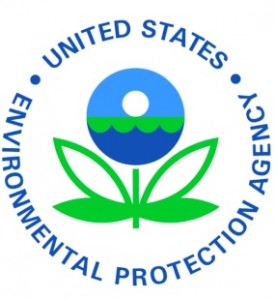Posted on October 30, 2012
As Americans work together to coordinate emergency?response efforts, disaster?relief, and clean-up following Hurricane Sandy, the Asbestos Disease Awareness Organization (ADAO) urges you to adhere to federal guidelines in order to protect public health. After the 2011 tornado in Joplin, Missouri, residents and respondents removed a variety of hazardous materials, including 2,600 tons of asbestos.?The Environmental Protection Agency (EPA)?s online article ?Natural Disasters and Weather Emergencies ? Dealing with Debris and Damaged Buildings? contains excellent information about handling debris after a disaster.
On Sunday, the White House reported that President Obama signed a state of emergency declaration in the District of Columbia, Massachusetts, New York, Connecticut, Pennsylvania, Maryland, Rhode Island and New Jersey, which calls for federal aid to supplement the cities? response efforts to the emergency conditions.
ADAO?s thoughts and prayers are with those impacted by Hurricane Sandy.
In unity,
Linda
Linda Reinstein?s ?Social Networks
ADAO?s?Social Networks
 The Environmental Protection Agency (EPA): Natural Disasters and Weather Emergencies -?Dealing with Debris and Damaged Buildings
The Environmental Protection Agency (EPA): Natural Disasters and Weather Emergencies -?Dealing with Debris and Damaged Buildings
?Cleanup activities related to returning to homes and businesses after a disaster can pose significant health and environmental challenges. People may be exposed to potentially life-threatening hazards posed by leaking natural gas lines, and carbon monoxide poisoning from using un-vented fuel-burning equipment indoors. During a flood cleanup, failure to remove contaminated materials and to reduce moisture and humidity may present serious long-term health risks from micro-organisms, such as bacteria and mold.
- General cautions
- Be aware of possible combustible or explosive gases
- Open all windows when entering a building
- Avoid carbon monoxide poisoning
- Avoid problems from
- Mold, bacteria and insects
- Use of cleaners, disinfectants, and pesticides
- Airborne asbestos and lead dust
- Properly dispose of waste
- Guidances
- Guidance for structurally unsound buildings
- Guidance for addressing spills from electrical equipment
- Emergency hurricane debris burning guidance
- More resources on debris
- Links to additional information
EXCERPT FROM EPA DEALING WITH DEBRIS AND DAMAGED BUILDINGS SECTION ON ASBESTOS AND LEAD DUST
Avoid problems from airborne asbestos and lead dust?- Elevated concentrations of airborne asbestos can occur if asbestos-containing materials present in many older homes are disturbed. Pipe or other insulation, ceiling tiles, exterior siding, roof shingles and sprayed on-soundproofing are just some of the materials found in older buildings that may contain asbestos. Buildings constructed before 1970 are more likely to contain asbestos. Airborne asbestos can cause lung cancer and mesothelioma, a cancer of the chest and abdominal linings. Lead is a highly toxic metal which produces a range of adverse health effects, particularly in young children. Many homes built before 1978 may contain lead-based paint. Disturbance or removal of materials containing lead-based paint may result in elevated concentrations of lead dust in the air.
- If you know or suspect that your home contains asbestos or lead-based paint and any of these materials have been damaged or will otherwise be disturbed during cleanup,?seek the assistance of public health authorities and try to obtain help from specially trained contractors, if available.
- If possible, removed materials should be handled while still wet or damp, double bagged and properly labeled as to contents.
- In handling materials that are believed to be contaminated with asbestos or lead, EPA recommends that,?at a minimum,?you wear gloves, goggles, and most importantly, OSHA-approved respiratory protection, if available.
- While still wearing a mask, wash hands and clothing after handling such materials.
- If at all possible, avoid activities that will generate dust, such as sweeping or vacuuming debris that may contain asbestos or lead.
- Take precautions before your contractor or you begin remodeling or renovations that disturb surfaces that may contain lead-based paint (such as scraping off paint or tearing out walls):
- Have the area tested for lead-based paint.
- Do not use a belt-sander, propane torch, heat gun, dry scraper, or dry sandpaper to remove lead-based paint. These actions create large amounts of lead dust and potentially harmful fumes.
- Temporarily move your family (especially children and pregnant women) out of the apartment or house until the work is done and the area is properly cleaned. If you can?t move your family, at least completely seal off the work area.
Properly dispose of waste?- Caution must be exercised to assure that all waste materials are removed and disposed of properly. Open burning of materials by individuals should be avoided. Improperly controlled burning of materials not only represents significant fire hazards but can also produce additional hazards from the vapors, smoke, and residue that are produced from the burning.?
FEDERAL RESOURCES:
Federal Emergency Management Agency (FEMA)
Environmental Protection Agency (EPA)
Occupational Safety and Health Administration (OSHA)
Source: http://www.asbestosdiseaseawareness.org/archives/15999
marine helicopter crash chicago weather star jones wheres my refund photo of whitney houston in casket carrot top george huguely
No comments:
Post a Comment
Note: Only a member of this blog may post a comment.